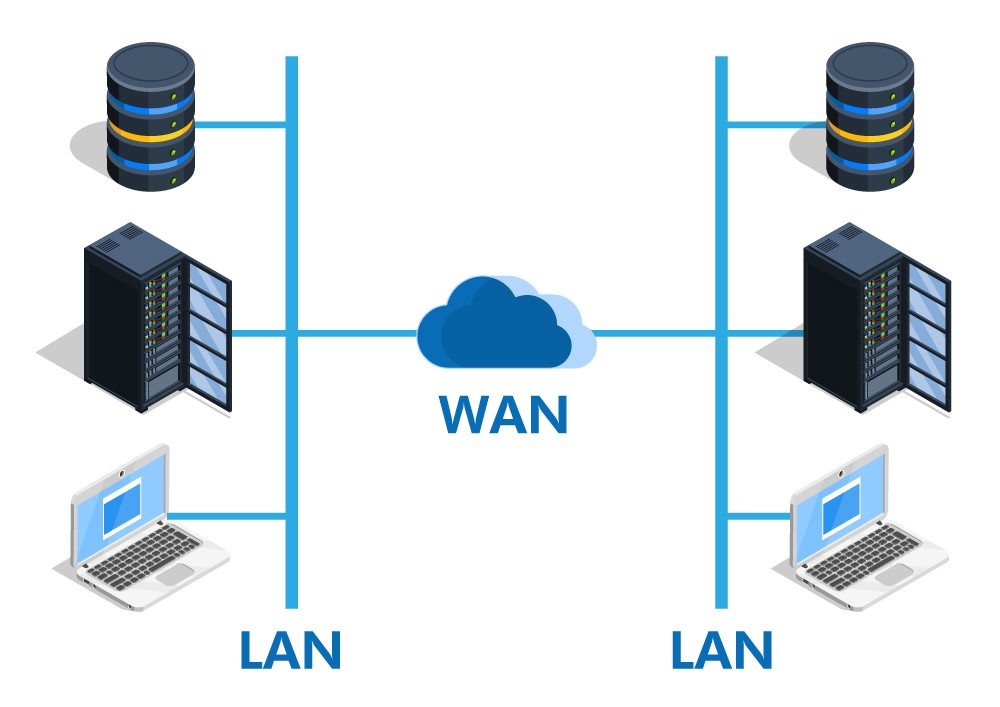
Router Tips - What do you know about WAN?
What is a WAN?
A wide-area network (WAN) is the technology that connects your offices, data centers, cloud applications, and cloud storage together. It is called a wide-area network because it spans beyond a single building or large campus to include multiple locations spread across a specific geographic area, or even the world. For example, businesses with many international branch offices use a WAN to connect office networks together. The world’s largest WAN is the internet because it is a collection of many international networks that connect to each other. This article focuses on enterprise WANs and their uses and benefits.

How does a WAN work?
Enterprises have resources running in different on-premises data centers, branch offices, and virtual private clouds (VPCs). To connect these resources, enterprises use multiple network connections and internet services. Since companies cannot build their own network infrastructure across multiple geographical boundaries, they typically rent it from a third-party service provider.
The following are some common types of connections:
Leased lines
A leased line is a direct network connection that you can rent from a large network provider, such as an ISP. It can connect two LAN endpoints together. Leased lines are not necessarily physical lines. They may be virtual connections that the service providers implement over other network infrastructure.

Tunneling
Tunneling is a way to encrypt data packets as they move over the public internet. In tunneling, you use an internet connection to access enterprise servers in another country. But you send them as encapsulated packets, forming your own virtual private network (VPN).

Multiprotocol label switching
Multiprotocol Label Switching (MPLS) is a technique that routes data traffic based on predetermined labels. It attempts to route critical data traffic across shorter or faster network paths, improving network performance. It works between Open Systems Interconnection (OSI) layers 2 and 3. You can use it to create a unified network across existing infrastructure, such as IPv6, frame relay, ATM, or ethernet. You can use MPLS leased lines or MPLS with VPNs to create efficient and secure networks.

Software-defined WAN
Software-defined wide-area network (SD-WAN) is the further evolution of MPLS technology. It abstracts the MPLS functions into a software layer. Because SD-WAN works over commodity broadband internet connections, it can often reduce networking costs and provide greater flexibility than a fixed connection.

MPLS vs. SD-WAN
MPLS can slow down cloud integration because it routes traffic through corporate headquarters, which act as central choke points. On the other hand, SD-WAN is cloud-aware and integrates much better with modern cloud infrastructure. SD-WAN is also cost effective. It can work over MPLS so you can use bandwidth more efficiently on expensive MPLS lease lines.
What are WAN protocols?
Wide-area network (WAN) protocols, or networking protocols, define the rules of communication across any network. The following are some examples:
Frame relay
Frame relay is an early technology that packages data in the form of frames and transmits it over a private line to a frame relay node. Frame relay works on layers 1 and 2 and facilitates information transfer from one LAN to another over multiple switches and routers.

Asynchronous transfer mode
Asynchronous Transfer Mode (ATM) is also an early WAN technology that formats data into 53-byte data cells. ATM network devices use time-division multiplexing, which converts digital signals into fixed-sized cells, transmits them, and then reassembles them at their destination.

Packet over SONET/SDH
Packet over SONET/SDH (POS) is a communication protocol that defines how point-to-point links communicate when using optical fiber.

TCP/IP
The Transmission Control Protocol/Internet Protocol (TCP/IP) defines end-to-end communication by specifying how data should be packetized, addressed, transmitted, routed, and received. IPv6 is the latest version of the most commonly used method.